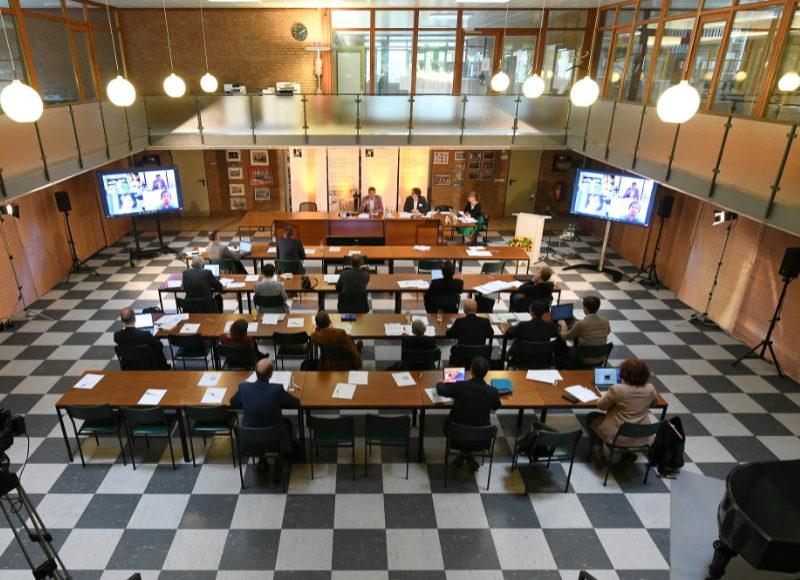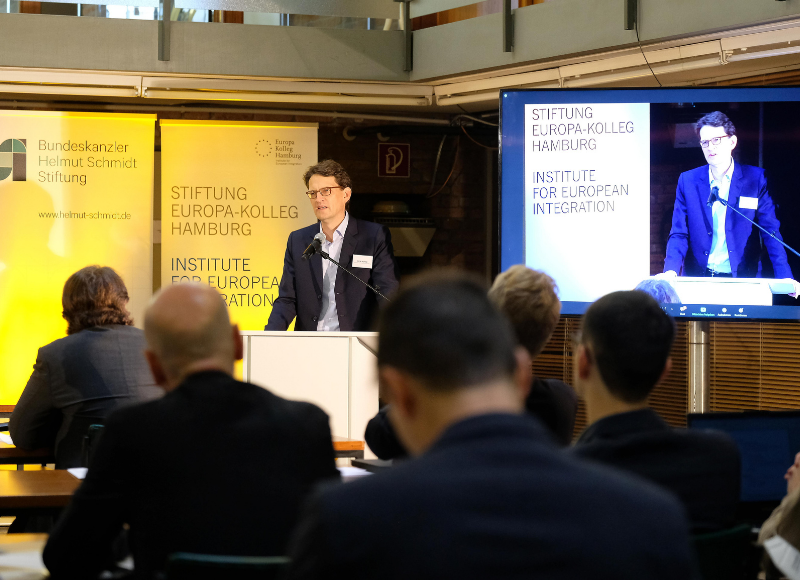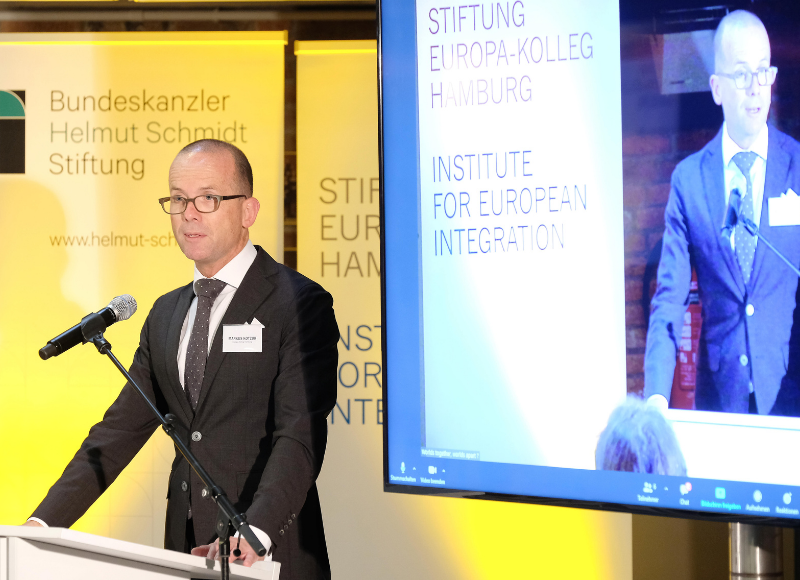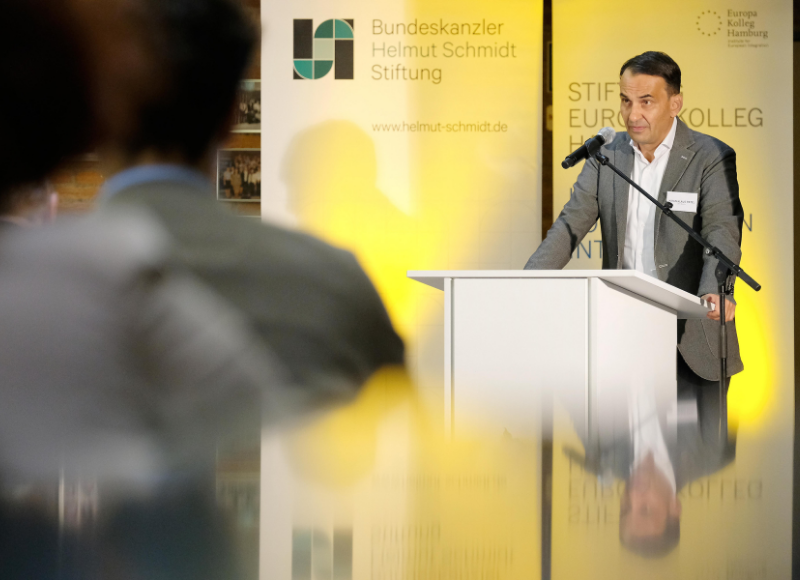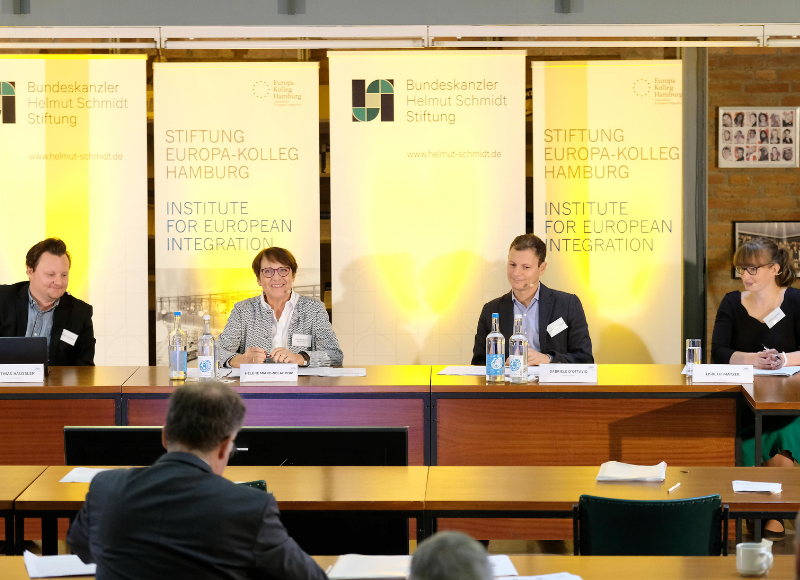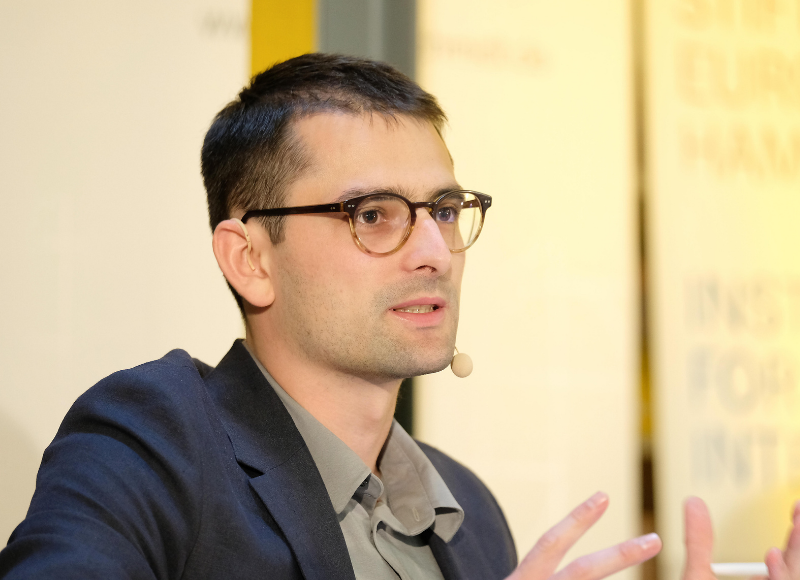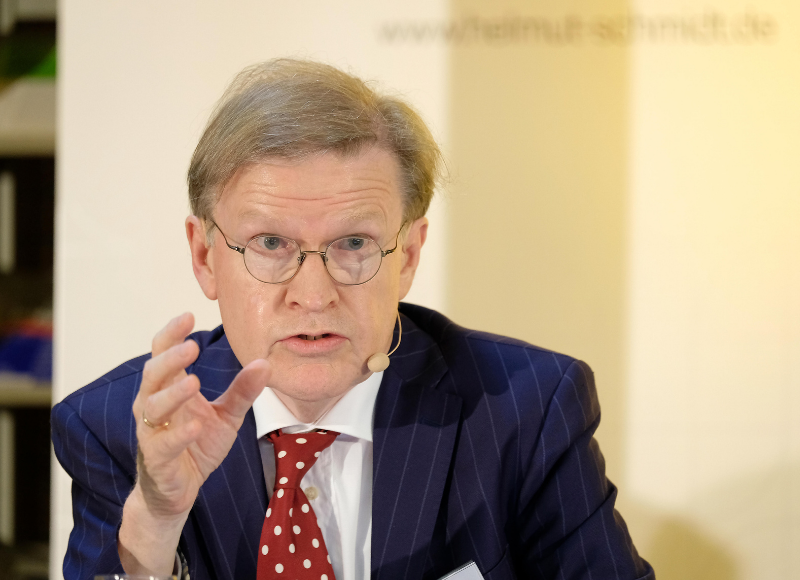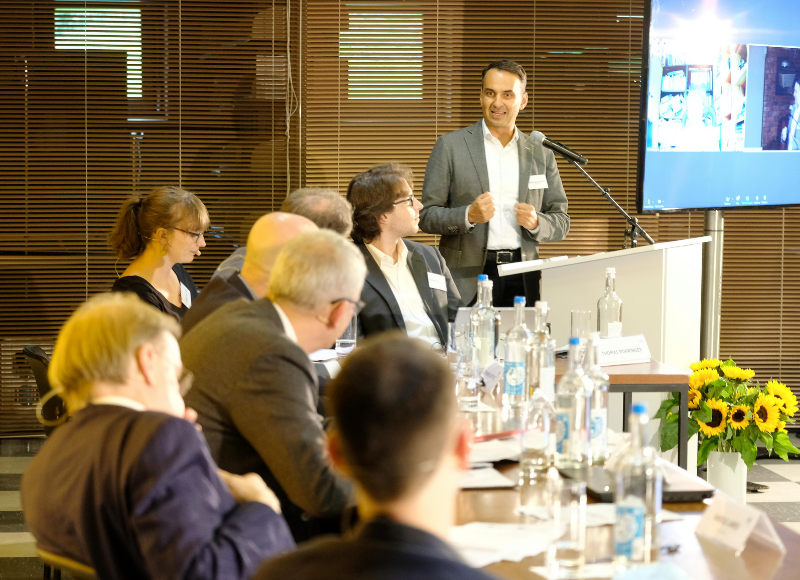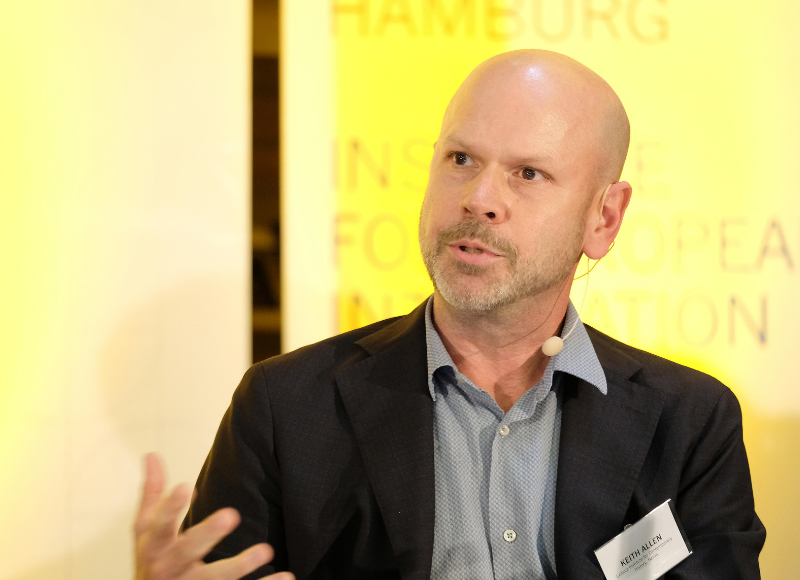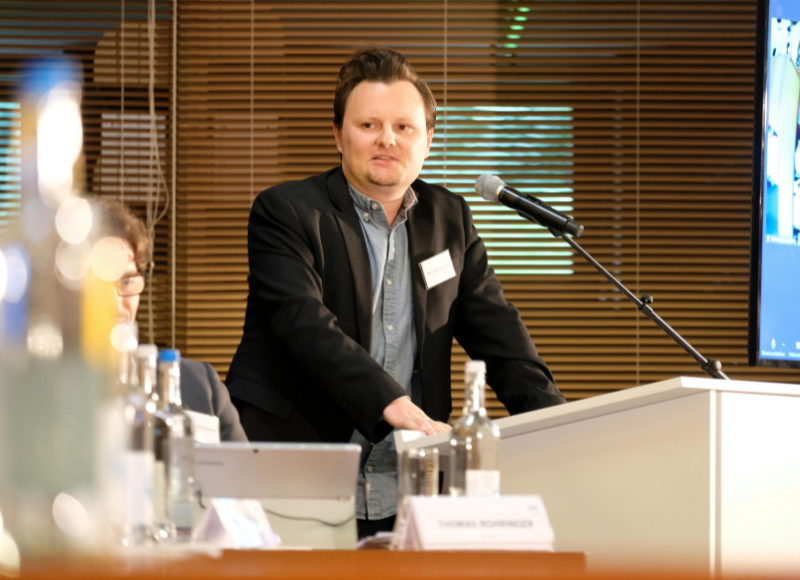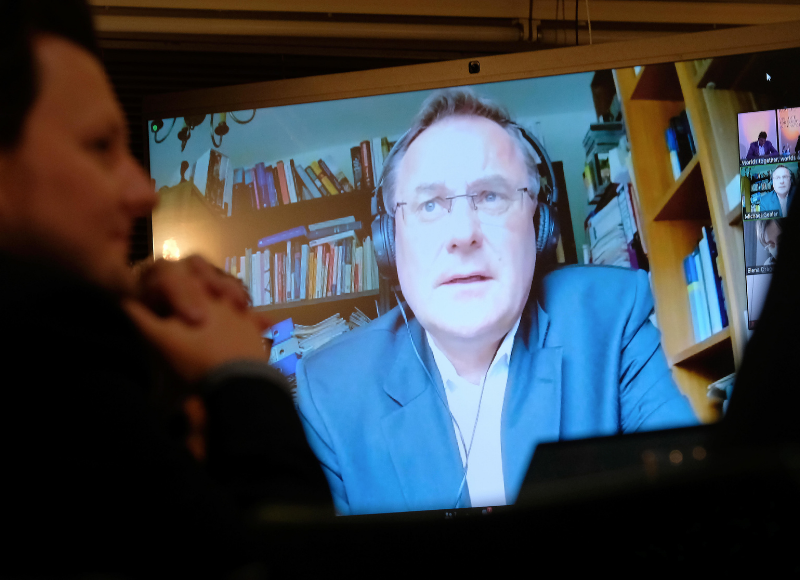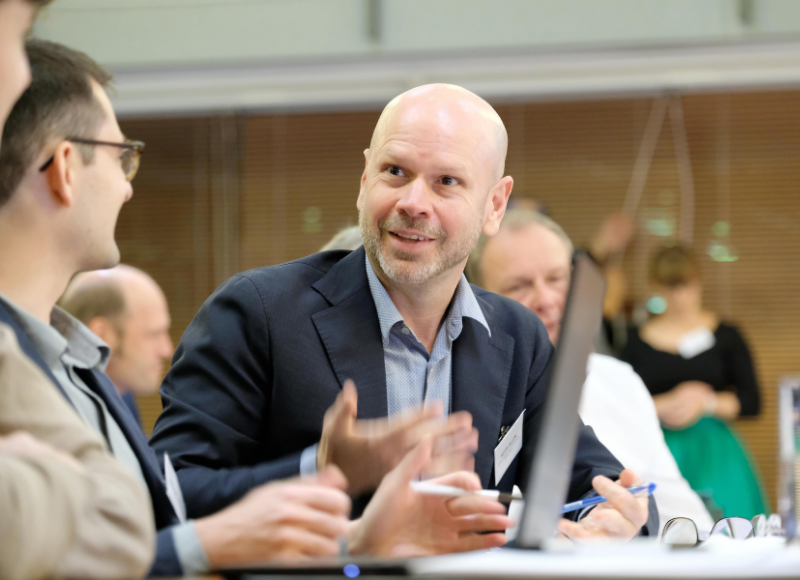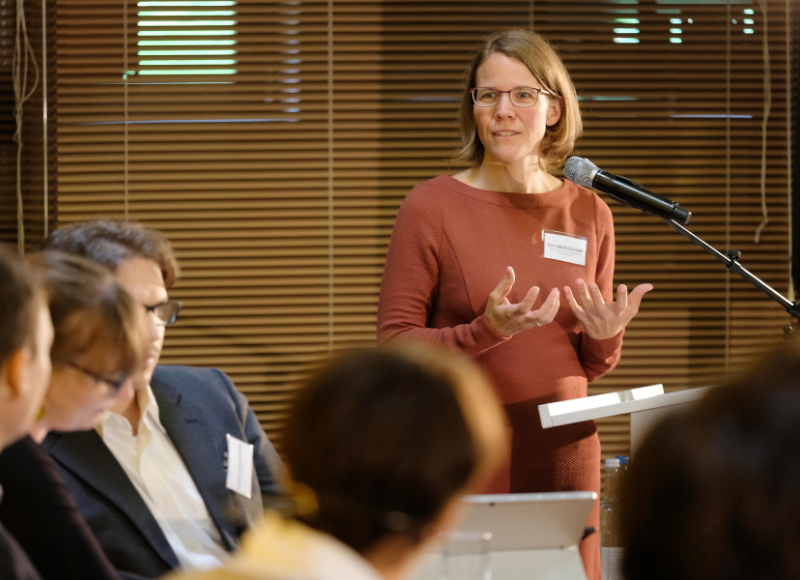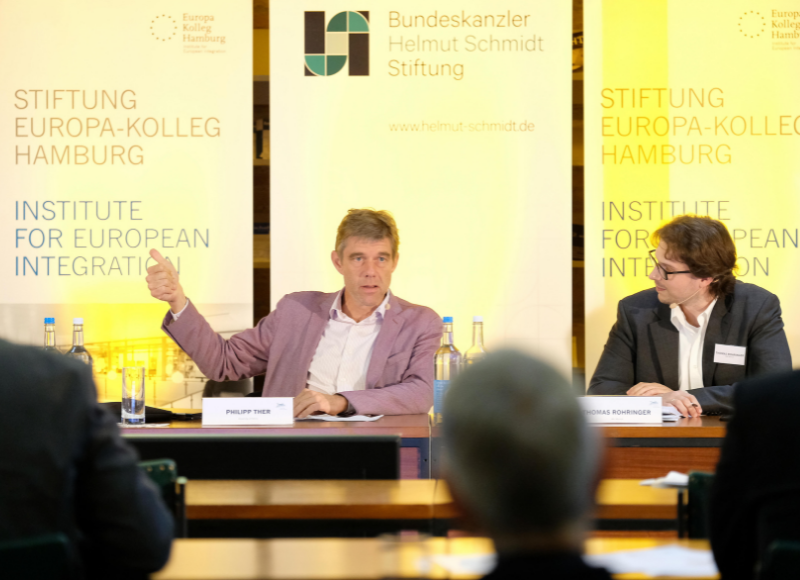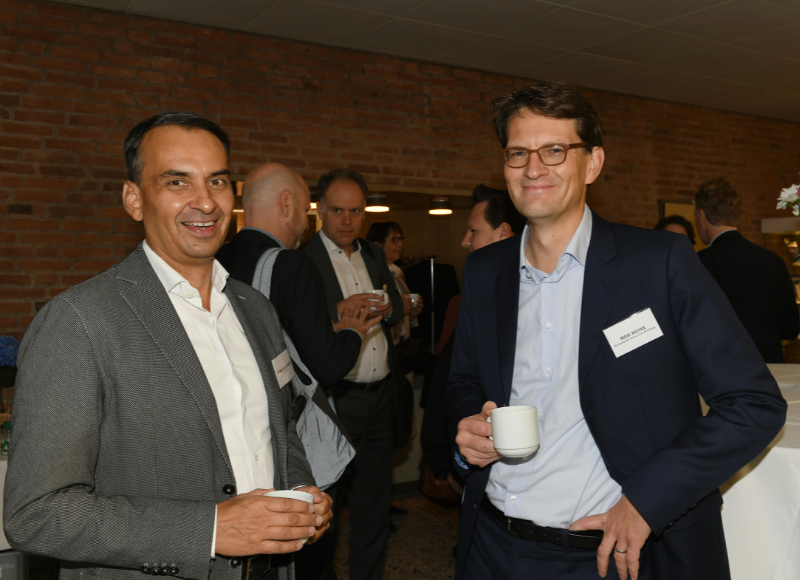International Conference | Hamburg, 23. - 25. September 2021
Author: Julia Raba
How did the European process of integration and German reunification mesh with one another? What role in particular did European monetary integration play in this process? These were among the questions addressed by the conference “Worlds Together, Worlds Apart? Assessing the Interplay between European Integration and German Unification”, designed and run by the first Scholar in Residence of the Bundeskanzler-Helmut-Schmidt-Stiftung and the Europa-Kolleg Hamburg, Kiran Klaus Patel, and supported by the City of Hamburg. Twenty-one international experts debated the issues from 23 to 25 September both at the Europa-Kolleg and online.
In his welcoming address, Europa-Kolleg President Markus Kotzur emphasised the importance of a European Germany and a European Europe. After he and Meik Woyke, Chairman of the Management Board and Managing Director of the Bundeskanzler-Helmut-Schmidt-Stiftung, had opened the conference together with Kiran Patel, the relationship between European integration and German unity were discussed through four themed panels.
In the first panel on Germany’s perspectives as part of the “West”, four academics presented their research findings on German relations with the United Kingdom, France, the United States of America and Italy. Matthias Häußler (University of Regensburg) argued that German unification acted more as a catalyst than as a trigger for the isolated position of the UK in relation to EU partners. A new perspective on the stance of the UK towards Germany was that this changed following the fall of the Berlin Wall and led to new political tactics. The long-term dynamics between the three dominant nations in Western Europe – the UK, France and Germany – had remained constant, however. The UK had not been in a position to penetrate the Franco-German relationship or put itself on an equal footing. This had already been evident in the 1960s and in the close alliance between Helmut Schmidt and Valéry Giscard d’Estaing in the decade that followed. Hélène Miard-Delacroix (Sorbonne University) also analysed continuities in French and British relations with Germany and emphasised the importance of the time factor. The re-election of the then French President, François Mitterrand, in 1988 and the active policy he pursued towards European integration and monetary union generated a new momentum. Miard-Delacroix had also concentrated in her research in particular on French fears concerning the political changes German reunification would entail. Perspectives from beyond Europe were also examined by the panel: What role did the USA play in the processes of European integration and German reunification? Philipp Gassert (University of Mannheim) argued that the end of the division of Germany presented an opportunity to reshape transatlantic relations. The “elephant in the room” of these relations was the future of NATO, which was of central importance to US security policy. For the USA, the process of German reunification had to be accompanied by further integration into NATO and an increasingly integrated European community. The USA and the UK shared a desire to retain a unified Germany as a central part of the transatlantic partnership.
In the second panel session, the academics looked at Germany as a part of eastern Central Europe. Philipp Ther (University of Vienna) argued that the history of German unity and “eastern enlargement” was and is shaped by Western ideas, expectations, and norms. He noted that the Berlin Wall had been torn down by people on its eastern side: So had the West really “won”? He surmised that the West had underestimated the effects of history behind the “Iron Curtain”. The term “eastern enlargement”, used by the European Commission and West Germany to denote the process of enlargement to include Poland, Hungary and Slovakia, for instance, was not quite correct. These countries were part of Central Europe, and thinking of them as part of the “East” revealed the political perception in Western Europe coupled with false notions of the role played by the GDR in the “East”. The argument was also made that the “eastern” nations should not be perceived as passive objects of history. In this regard, Ferenc Laczo (University of Maastricht) examined various facets of Hungarian influence on the German process of reunification. A further perspective was highlighted by Elena Dragomir (Valahia University of Târgovişte). The so-called “Eastern bloc” was far less monolithic than it was perceived to be from a Western perspective. Every nation acted according to its own needs and political interests. Romania, in particular had more scope for action than the West was ready to admit. Romania’s attitude towards the EEC was very accommodating – typical of assimilative relationships between economically emerging countries and larger economic world powers. On the issue of the relationship between Europe and national sovereignty, Laczo concluded that European integration was a way of gaining scope for action. The countries of eastern Central Europe were strongly transnationally networked economically, but politically and culturally they were more inward-looking.
In the third panel the European Community (EC) and German reunification were discussed with regard to monetary and economic integration. Victor Jaeschke (University of Potsdam) observed that Economic and Monetary Union (EMU) had been accompanied by comprehensive European social policies. In 1990 it was believed that, if the European Single Market was close to completion, accelerated by German reunification, a European Social Union would somehow follow, which had of course never happened, Jaeschke explained. Discussion in Germany of monetary union centred on the question: Is monetary union a loss for Germany or an advantage? The 1990 Strasbourg Summit had been one of the few examples where the personal influence of a political player on a key international policy decision could be clearly recognised. The German position and the timetable for EMU were personally prescribed by Helmut Kohl, who in October/November of 1989 was under very strong pressure. The Strasbourg Summit had been of great importance for Germany and Europe and there existed differing reports as to the mood of the summit. Helmut Kohl declared that he had been subjected to an atmosphere almost resembling a tribunal, whereas the summit rapporteurs painted a wholly different picture. He was generally not to be underestimated as a tactician, according to Andreas Wirsching (Ludwig Maximilian University of Munich). Kohl succeeded in shifting the pressure exerted on the German government by the Europeans after the fall of the Wall onto the French government and Mitterrand, as could be seen clearly in the French archives. Harold James (Princeton University) observed that Germany’s transition from the Deutschmark to the euro was accompanied by a loss of German control and made Germany dependent on decisions by the ECB Governing Council. A further aspect was the cultural importance the Deutschmark had for the German population: In social narratives, the Deutschmark stood for economic and financial stability, while the introduction of the euro was held to mean a loss of this very stability. Both the European and the German monetary unions had been political decisions rather than economic or financial ones, Wirsching concluded.
The topic of the final panel was European integration processes beyond the euro and their overlap with German reunification. It was German unification that led to plans for a political union that also included foreign and security policy, said Gabriele Clemens (University of Hamburg). Mitterrand and Kohl aimed to strengthen the European Parliament coupled with further institutional reforms. But who initiated the idea of a common foreign and security policy within the political union? According to Clemens there were several. In February 1990 Valéry Giscard d’Estaing and Helmut Schmidt asserted the need to build up a federal union of which foreign and security policy had to be a part. In March, the European Parliament called for a common foreign policy, and Jacques Delors also put forward such plans. In this respect, the UK was against a curtailment of its foreign policy sovereignty, while the Netherlands and Belgium proposed even closer cooperation. Germany’s tactics in the matter were to allay the fears of neighbouring states. At the same time, German’s greatest fear was global insignificance, to which a strong common foreign and security policy was the answer, Clemens stated. The panel discussion revolved primarily around domestic German issues, among them political challenges in the German federal states and the role of the police. Frank Bösch (University of Potsdam) emphasised how important it was to address the fear among western nations that reunification of the FRG and the GDR would result in a propagation of Communist ideology. Germany’s Nazi past was also part of the discussion. Dominik Geppert (University of Potsdam) argued that it was largely the opposition that brought up this past in West German parliamentary debates about German reunification. The Greens in particular expressed concern that the German reunification process could also be accompanied by a return to the “bad past”. Yet there was a general consensus in parliament that Germany would have to learn from its past to have a good future in Europe. The changes between 1985 and 1992 had been revolutionary and epoch-making. It was interesting in the debates that German parliamentarians saw European integration as part of a continuity and stability, even though it could also be seen as revolutionary, Geppert commented.
Concluding the conference, Kiran Patel summarised the most important insights from the panel discussions and provided an outlook on the next steps of the project. The results of the conference are to be published as an anthology.



